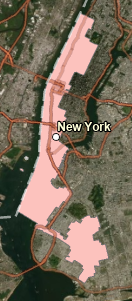Lab 1 [GIS6005]: Map Design & Typography
Recreational Areas near Austin, Texas
This map highlights the importance of five design features that improve map communication: visual contrast, legibility, figure-ground organization, hieararchical organization, and balance.
Visual contrast was created in this map by decreasing the shade of the Travis County area relative the symbology for main features noted in the legend. In addition, the shade used for Travis County is visually distinct from the white background used for the overall map.
Legibility was achieved by carefully choosing border widths for the symbology of golf courses and hydrography. This makes most of the golf courses appear as solid areas and allows for both larger and smaller waterways to be visualized on the map. The symbol for the recreation centers was then selected to demonstrate this as a center of activity by using a circular choice for the symbol.
Figure-ground organization was achieved in the inset map for the U.S. by using shading that makes the State of Texas more prominent compared to other states.
Hierarchical organization was achieved by including major roads for context, but making sure they are not prominent in the hierarchy compared to the main purpose of the map (three types of recreational areas). The symbol size for the recreation centers was also selected to be roughly the same size as areas on the map of large waterways and golf courses (to make them all appear roughly equal in prominence).
Balance was achieved by centering the map and legend on the page and using other elements to fill in blank space. The inset map was intentionally placed in the upper right corner to balance the legend title in all capital letters placed in the lower left.




Comments
Post a Comment